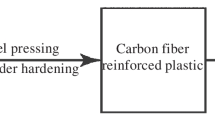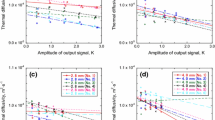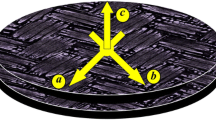Abstract
Thermal-diffusivity measurements using the laser-flash method have been investigated in order to establish a thermal diffusivity standard. In many cases, thermal-conductivity values of bulk materials are calculated from the thermal diffusivity, specific heat capacity, and bulk density. The thermal diffusivity is one of the transport properties. It depends on the material and is sensitive to the structure. So, it is important to measure the thermal diffusivity of each material. The laser-flash method is one of the most popular methods for thermal-diffusivity measurements of bulk materials above room temperature. Because the method realizes a short-time method and is a non-contact method, it is very suitable for practical use. And it is known as a highly reliable measurement since one-dimensional heat diffusion phenomena observed in these measurements are simple. On the other hand, more reliable values measured by the method are important in the view of thermal design. According to the background, there is a need of a standard for thermal-diffusivity measurements using the laser-flash method to obtain reliable thermal diffusivities. The National Metrology Institute of Japan (NMIJ) in AIST has established reference materials for the laser-flash method and is supplying them. However, they are not sufficient to cover the whole range of thermal-diffusivity measurements. Thus, some candidate materials have been investigated to establish another reference material. Carbon materials are considered since it is preferable for the laser-flash method that the material is optically nontransparent and dark colored (ideally black). In this study, the thermal diffusivity of a pyrolytic graphite that is expected to be a candidate reference material for the laser-flash method is investigated. It was found that the intrinsic thermal diffusivities can be determined along the in-plane and cross-plane directions. The high thermal diffusivity of the in-plane direction, \(1.19 \times 10^{-3}\,\mathrm{m}^{2}\,{\cdot }\,\mathrm{s}^{-1}\), was successfully observed at room temperature. The thermal diffusivity along the cross-plane direction was determined to be \(4.8 \times 10^{-6}\,\mathrm{m}^{2}\,{\cdot }\, \mathrm{s}^{-1}\). It has indicated that the pyrolytic graphite has a large anisotropy from the view of the thermal diffusivity.








Similar content being viewed by others
References
W.J. Parker, R.J. Jenkins, C.P. Butler, G.L. Abbott, J. Appl. Phys. 32, 1679 (1961)
Y.S. Touloukian, R.W. Powell, C.Y. Ho, M.C. Nicolaou, Thermal Diffusivity, Thermophysical Properties of Matter, vol. 10, TPRC Data Series (IFI/Plenum, New York, 1973)
NMIJ Reference Materials Catalogue, https://www.nmij.jp/english/service/C/
IRMM Reference Materials Catalogue, http://irmm.jrc.ec.europa.eu/reference_materials_catalogue/catalogue/Documents/rm_catalogue.pdf
M. Ogawa, K. Mukai, T. Fukui, T. Baba, Meas. Sci. Technol. 12, 2058 (2001), http://www.jfcc.or.jp/05_material/ [in Japanese]
JCGM 200:2012, “International Vocabulary of Metrology - Basic and General Concepts and Associated Terms” (VIM), http://www.bipm.org/en/publications/guides/vim.html and ISO/IEC Guide 99 (2012)
M. Akoshima, M. Neda, T. Baba, “Quantitative Evaluation of the Effect of Black-Coating for Laser Flash Measurement”, Thermal Conductivity 31, Thermal Expansion 1: Proceedings of 31st International Thermal Conductivity Conference and 19th International Thermal Expansion Symposium, ed. by L. Kiss (DEStech Publications Inc, Lancaster, 2013), p. 22
M. Akoshima, T. Baba, Int. J. Thermophys. 27, 1189 (2006)
B. Hay, J.R. Filtz, J. Hameury, L. Rongione, Int. J. Thermophys. 26, 1883 (2005)
http://www.minteq.com/our-products/minteq-pyrogenics-group/pyroid-ht-pyrolytic-graphite/
T. Baba, A. Ono, Meas. Sci. Technol. 12, 2046 (2001)
J.A. Cape, G.W. Lehman, J. Appl. Phys. 34, 1909 (1963)
D. Josell, J. Warren, A. Cezairliyan, J. Appl. Phys. 78, 6867 (1995)
“Laser Flash Data for Analysis Program, CFP32 for Windows”, http://www.nmij.jp/~mprop-stats/thermophys/homepage/research/cfp32/index.html [in Japanese]
M. Akoshima, B. Hay, M. Neda, M. Grelard, Int. J. Thermophys. 34, 778 (2013)
H. Abe, H. Kato, T. Baba, J. Appl. Phys. 50, 11RG01 (2011)
J.M. Ziman, Electrons and Phonons: The Theory of Transport Phenomena in Solids, Oxford Classic Texts in the Physical Science (Clarendon Press/Oxford University Press, Oxford, 2001), p. 288
T. Azumi, Y. Takahashi, Rev. Sci. Instrum. 52, 1411 (1981)
J. Ishii, T. Baba, Jpn. J. Thermophys. Prop. 13, 70 (1999) [in Japanese]
Acknowledgments
The authors gratefully acknowledge the financial support received from the industrial Technology Research Grant Program (Project No. 08E52507a) of the New Energy and Industrial Technology Development Organization (NEDO). The authors would like to thanks Ms. Suzuki for her help in laser flash measurements.
Author information
Authors and Affiliations
Corresponding author
Rights and permissions
About this article
Cite this article
Akoshima, M., Abe, H. & Baba, T. Thermal Diffusivity of Carbon Materials as Candidate Reference Materials. Int J Thermophys 36, 2507–2517 (2015). https://doi.org/10.1007/s10765-014-1624-2
Received:
Accepted:
Published:
Issue Date:
DOI: https://doi.org/10.1007/s10765-014-1624-2




